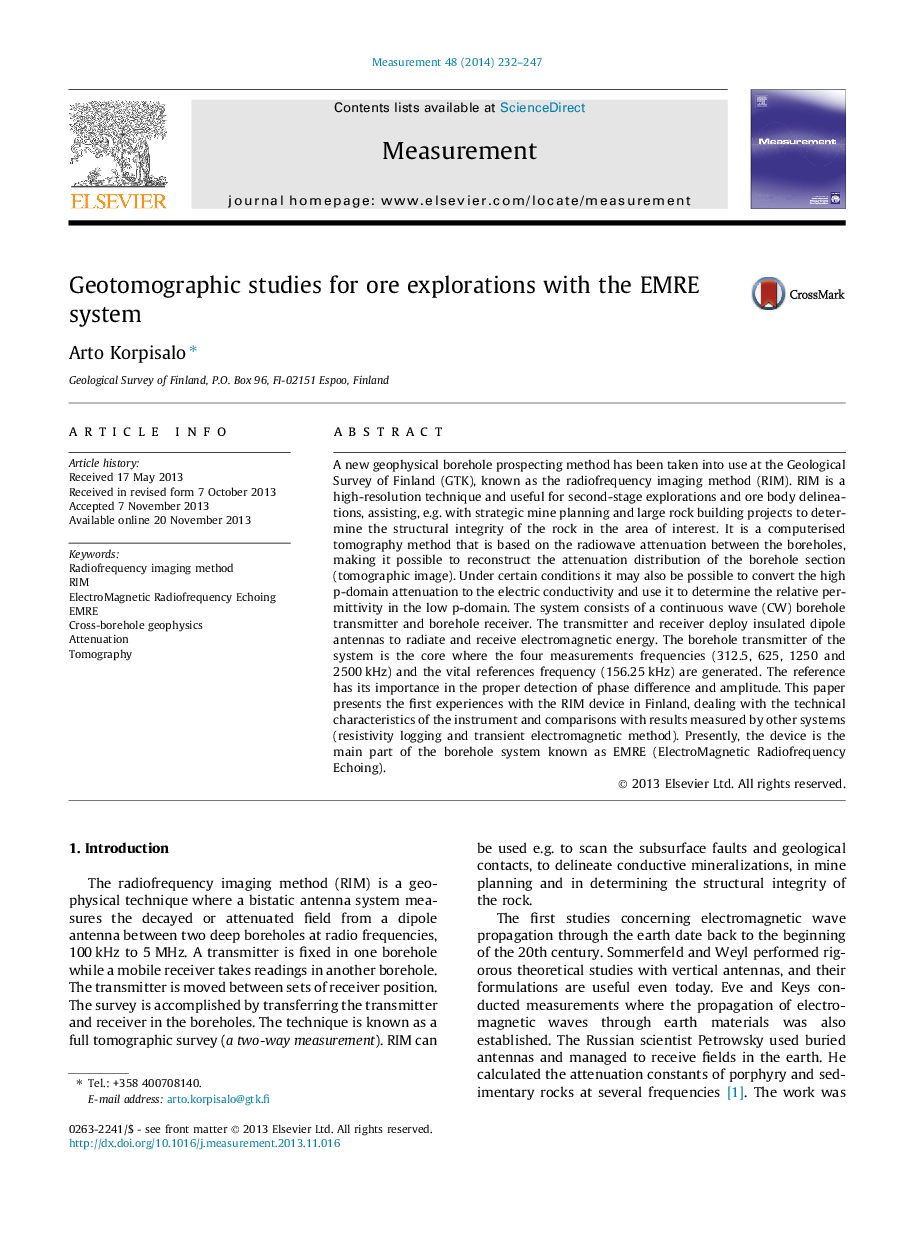| Article ID | Journal | Published Year | Pages | File Type |
|---|---|---|---|---|
| 7125795 | Measurement | 2014 | 16 Pages |
Abstract
A new geophysical borehole prospecting method has been taken into use at the Geological Survey of Finland (GTK), known as the radiofrequency imaging method (RIM). RIM is a high-resolution technique and useful for second-stage explorations and ore body delineations, assisting, e.g. with strategic mine planning and large rock building projects to determine the structural integrity of the rock in the area of interest. It is a computerised tomography method that is based on the radiowave attenuation between the boreholes, making it possible to reconstruct the attenuation distribution of the borehole section (tomographic image). Under certain conditions it may also be possible to convert the high p-domain attenuation to the electric conductivity and use it to determine the relative permittivity in the low p-domain. The system consists of a continuous wave (CW) borehole transmitter and borehole receiver. The transmitter and receiver deploy insulated dipole antennas to radiate and receive electromagnetic energy. The borehole transmitter of the system is the core where the four measurements frequencies (312.5, 625, 1250 and 2500Â kHz) and the vital references frequency (156.25Â kHz) are generated. The reference has its importance in the proper detection of phase difference and amplitude. This paper presents the first experiences with the RIM device in Finland, dealing with the technical characteristics of the instrument and comparisons with results measured by other systems (resistivity logging and transient electromagnetic method). Presently, the device is the main part of the borehole system known as EMRE (ElectroMagnetic Radiofrequency Echoing).
Keywords
Related Topics
Physical Sciences and Engineering
Engineering
Control and Systems Engineering
Authors
Arto Korpisalo,
